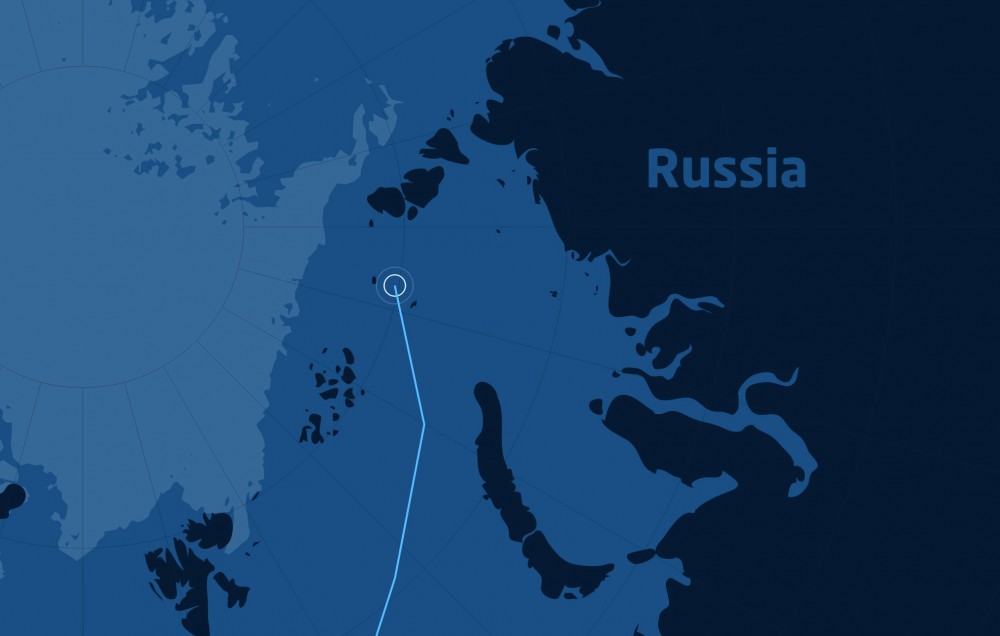As an international expedition enters Russian Arctic waters, military activity in the area is high
The Northern Fleet recently conducted live-fire drills in the area, and has stepped up its policing of shipping in the region.

The Multidisciplinary drifting Observatory for the Study of Arctic Climate (or MOSAiC), the largest-ever expedition of its kind, set sail Friday from Tromsø, Norway in the German icebreaker Polerstern, and four days later sailed across the Barents Sea and into the northern parts of the Kara Sea.
By late Sept. 24, the ship had reached to 79.5 degrees North, in waters located between the archipelagos of Franz Josef Land and Severnaya Zemlya.
It is a region with an increasing military presence. Russia has built and upgraded several military bases in the area and the Nagurskoye base in the Franz Josef Land is now among the most potent military forces in the whole High Arctic.
Military exercise
Only few days ahead of the arrival of the Polarstern in the waters south of Franz Josef Land, three major Russian naval vessels conducted a big shooting exercise in the area. Anti-submarine vessel Vice-Admiral Kulakov and big landing ships Kondopoga and Aleksandr Otrakovsky trained air defense combat and applied several kinds of weaponry, including the nuclear-capable air-launched ballistic missile Kinzhal.
They also trained in radio-electronic warfare, the Northern Fleet informs.
In addition to the more comprehensive training activities, the Northern Fleet has also stepped up its patrolling in the area.
Northern Fleet inspections
On the 21st of September, the Vice-Admiral Kulakov took action against the small sailing vessel Pangaea that was on its way through the area. An inspection of ship documents was conducted and the ship subsequently allowed to proceed its Arctic voyage
The Pangaea started its voyage in Alaska and sailed into the Arctic from the Bering Strait side with the aim to drop off the two famous explorers Mike Horn and Børge Ousland. They are supposed to ski from about 86 degrees North across the North Pole and to be picked up again by Pangaea on the European side of the Arctic later this fall.
The Northern Fleet recently also took action against a commercial ship in the Kara Sea. Naval vessel S. Kuznetsov was halted by marines after suspicions of shipping violations. The action against the cargo ship took place on Sept. 13 north of the Taymyr Peninsula.
Entering the ice
No engagement by the Russian Navy against the Polarstern has been reported. The expedition media service on Sept. 23 reported stable progress towards icy waters. But the expedition team experienced strong winds and waves up to four meters high, according to a tweet.
On board the Polarstern are more than 120 people, including several teams of researchers that have been preparing for the voyage for several years. It is the most comprehensive Arctic expedition ever, with a total budget of more than €140 million.
The ship, a German-built icebreaker operated by the Alfred Wegener Institute for Polar and Marine Research (AWI), will sail deep into the ice and subsequently drift with the ice for a whole year.
In the course of the expedition, up to 600 experts will be on board the vessel, and be exchanged in phases. In addition, around 300 people will work in the background to make the expedition possible.
Representatives of 19 countries take part in the MOSAiC.
Four icebreakers from Russia, Sweden and China will assist the Polarstern in the course of the year. Among them will the new Chinese icebreaker Xue Long 2. In spring 2020, a landing strip will be built on the Arctic ice, to serve German research aircrafts Polar 5 and Polar 6.
The MOSAiC will contribute to a quantum leap in our understanding of the coupled Arctic climate system and its representation in global climate models, lead scientist Markus Rex said in a presentation in May 2019.